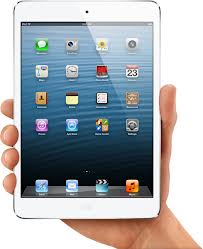The iPad Apps for Speech Therapy:
A powerful tool for Pediatric Speech Pathologists
The iPad has been a great addition to my bag of tricks during pediatric speech therapy sessions. I use the iPad for a variety of purposes such as increasing spontaneous length of utterance, improving syntax (First phrases, First Sentences, Super Duper apps), targeting articulation (Articpix), receptive language (Hamaguchiapps Fun with directions) expressive language (Toca Boca apps), receptive/expressive vocabulary (Kindergarten.com apps), auditory processing skills (Picture the Sentence), answering questions (Wh questions) and increasing vocalizations/verbalizations (Talking Apps such as Furry Friends).
I also use the iPad for many students to augment their verbal speech by using Communicate Easy, Autismate, and Proloque2go. Communicate Easy is an app that was developed by the father of a child with Autism. It is affordable and extremely easy to program. I have found it to be helpful in promoting vocalizations/verbalizations for kids who are nonverbal and increasing spontaneous length of utterance for children who are beginning to speak. Autismate is easy for all team members to use and customize for individual children. This app is scene-based and can be used with real photographs or picture symbols. Proloque2go is expensive but is a more sophisticated augmentative/alternative device that can be customized for a wide range of individuals with varying needs and levels of literacy.
Recently, I read an article about synthesized voices for augmentative communication users. When using the apps mentioned above to help augment speech, we select a voice from a limited variety of choices. Apparently, Fifty to sixty percent of synthesized voice users use the same voice (Perfect Paul). Many of those users do not identify with this voice. Fortunately, a Speech Scientist at Northeastern University, Rupal Patel decided that these individuals need to have the opportunity to make choices from a variety of voices. Patel was able to breakdown the sound from a speech disordered child, the melody, pitch, loudness, clarity, and breathing in their voice. He then gathers samples of many sounds and words from a similar aged typical child and adjusted the sounds to match the pitch, breathiness, and other characteristics of the child with the speech disorder. The ability for individuals that need to rely on a synthesized voice to choose from a variety of voices and a voice that they can identify with is a tremendous breakthrough in the field.
The Kidmunication Point
The use of iPads for speech therapy has revolutionized the approach to speech-language pathology.

